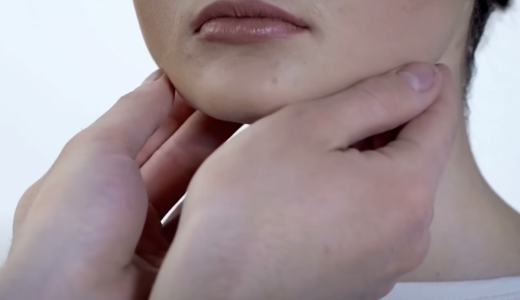Unlock the secret to better health: What you need to know about lymphatic massages
By
Veronica E.
- Replies 0
Disclaimer: The information provided in this article is for educational purposes only and is not intended as a substitute for professional medical advice, diagnosis, or treatment. Always consult your physician or other qualified healthcare providers with any questions you may have regarding a medical condition or before making any changes to your health regimen.
In the ever-changing world of wellness, lymphatic massages have been gaining attention, promising benefits like "detoxing," "sculpting," and overall improved health.
Many claim they help reduce bloating, boost circulation, and even support the immune system—but how much of this is true?
Are these massages truly a game-changer for your health, or just another wellness trend?
The GrayVine is here to break it down, helping our community of vibrant individuals over 60 navigate the facts, benefits, and considerations of lymphatic massages.

Contrary to modern wellness claims, lymphatic massage wasn’t originally designed for cosmetic purposes.
It was developed in the 1930s to help manage lymphedema, a condition that causes fluid buildup and swelling due to issues with the lymphatic system.
This technique, known as manual lymph drainage (MLD), has since been widely used in medical settings to support circulation and immune function.
Dr. Beth Oller, speaking with USA TODAY, explains, "While there is good research and data regarding the helpfulness of lymphatic massage in treating medical conditions, there is less so when it comes to using it for wellness purposes."
Lymphatic massage involves gentle, rhythmic movements to help direct lymph fluid toward the lymph nodes, where it can be processed and returned to the bloodstream.
It’s often used after surgery or injury to reduce swelling and encourage healing.
However, fluid buildup can be caused by many factors, including cancer, tissue injuries, food allergies, and a sedentary lifestyle.
If you've been diagnosed with a lymphatic issue, massage therapy may help—but it’s important to understand its limitations.
Social media is filled with claims that lymphatic massages are the ultimate fix for bloating, swelling, and even weight loss.
While these massages can temporarily reduce puffiness by moving fluid, they don’t create permanent changes in body shape or weight.
Massage therapy can certainly support stress relief, relaxation, and even improve the appearance of skin affected by swelling—but there’s no scientific proof that it directly removes toxins or leads to lasting fat loss.
Lymphatic massage isn’t for everyone.
If you have major heart conditions, blood clots, or malignant tumors, this type of massage may not be safe.
In some cases, an improperly performed massage can actually make fluid buildup worse.
Dr. Oller advises that anyone experiencing new or unexplained swelling should check with their doctor before trying lymphatic massage.
If you decide to try a lymphatic massage, make sure to go to a trained professional.
Proper technique is key to getting the best results while avoiding complications.
Lymphatic massage can be beneficial for people with certain medical conditions, but it’s important to approach it with realistic expectations.
While it may provide relief for swelling and support relaxation, it’s not a magic solution for weight loss or detoxification.
For our readers over 60, prioritizing wellness means making informed choices.
If you're considering lymphatic massage, talk to your healthcare provider first to see if it's right for you.
And remember—true health is built on balance, regular check-ups, and a proactive approach to self-care!
Read next: Pedicure nightmare: What this woman experienced will make you rethink your next salon visit!

Have you ever tried a lymphatic massage? Did you notice any benefits, or do you think it’s just another wellness trend? We’d love to hear your thoughts! Share your experiences in the comments below.
In the ever-changing world of wellness, lymphatic massages have been gaining attention, promising benefits like "detoxing," "sculpting," and overall improved health.
Many claim they help reduce bloating, boost circulation, and even support the immune system—but how much of this is true?
Are these massages truly a game-changer for your health, or just another wellness trend?
The GrayVine is here to break it down, helping our community of vibrant individuals over 60 navigate the facts, benefits, and considerations of lymphatic massages.

Exploring the rise of lymphatic massages—what's fact and what's fiction? Image Source: YouTube / Cancer Rehab PT.
The origins and purpose of lymphatic massage
Contrary to modern wellness claims, lymphatic massage wasn’t originally designed for cosmetic purposes.
It was developed in the 1930s to help manage lymphedema, a condition that causes fluid buildup and swelling due to issues with the lymphatic system.
This technique, known as manual lymph drainage (MLD), has since been widely used in medical settings to support circulation and immune function.
Dr. Beth Oller, speaking with USA TODAY, explains, "While there is good research and data regarding the helpfulness of lymphatic massage in treating medical conditions, there is less so when it comes to using it for wellness purposes."
How lymphatic massage works
Lymphatic massage involves gentle, rhythmic movements to help direct lymph fluid toward the lymph nodes, where it can be processed and returned to the bloodstream.
It’s often used after surgery or injury to reduce swelling and encourage healing.
However, fluid buildup can be caused by many factors, including cancer, tissue injuries, food allergies, and a sedentary lifestyle.
If you've been diagnosed with a lymphatic issue, massage therapy may help—but it’s important to understand its limitations.
Also read: Time for Thyroid Care: NYU Doctor shares signs that tell you to get your thyroid checked
Separating fact from fiction
Social media is filled with claims that lymphatic massages are the ultimate fix for bloating, swelling, and even weight loss.
While these massages can temporarily reduce puffiness by moving fluid, they don’t create permanent changes in body shape or weight.
Massage therapy can certainly support stress relief, relaxation, and even improve the appearance of skin affected by swelling—but there’s no scientific proof that it directly removes toxins or leads to lasting fat loss.
Also read: Struggling with back pain? Here’s what actually works, according to experts
Who should (and shouldn’t) consider lymphatic massage?
Lymphatic massage isn’t for everyone.
If you have major heart conditions, blood clots, or malignant tumors, this type of massage may not be safe.
In some cases, an improperly performed massage can actually make fluid buildup worse.
Dr. Oller advises that anyone experiencing new or unexplained swelling should check with their doctor before trying lymphatic massage.
Choosing the right practitioner
If you decide to try a lymphatic massage, make sure to go to a trained professional.
Proper technique is key to getting the best results while avoiding complications.
Lymphatic massage can be beneficial for people with certain medical conditions, but it’s important to approach it with realistic expectations.
While it may provide relief for swelling and support relaxation, it’s not a magic solution for weight loss or detoxification.
For our readers over 60, prioritizing wellness means making informed choices.
If you're considering lymphatic massage, talk to your healthcare provider first to see if it's right for you.
And remember—true health is built on balance, regular check-ups, and a proactive approach to self-care!
Read next: Pedicure nightmare: What this woman experienced will make you rethink your next salon visit!
Key Takeaways
- Lymphatic massages, or manual lymph drainage (MLD), are gaining popularity in wellness spaces with claims of sculpting and detoxifying the body.
- Originally intended to treat lymphedema, medical experts emphasize that the effectiveness of lymphatic massage for general wellness purposes has less research and data behind it.
- The massage aids in moving stagnant lymph fluid toward lymph nodes, which can be especially beneficial post-surgery or after an injury.
- Experts advise consulting with a family doctor for unexplained bloating or swelling before seeking a lymphatic massage and stress the importance of getting the treatment from a qualified practitioner to avoid potential complications.
Have you ever tried a lymphatic massage? Did you notice any benefits, or do you think it’s just another wellness trend? We’d love to hear your thoughts! Share your experiences in the comments below.






